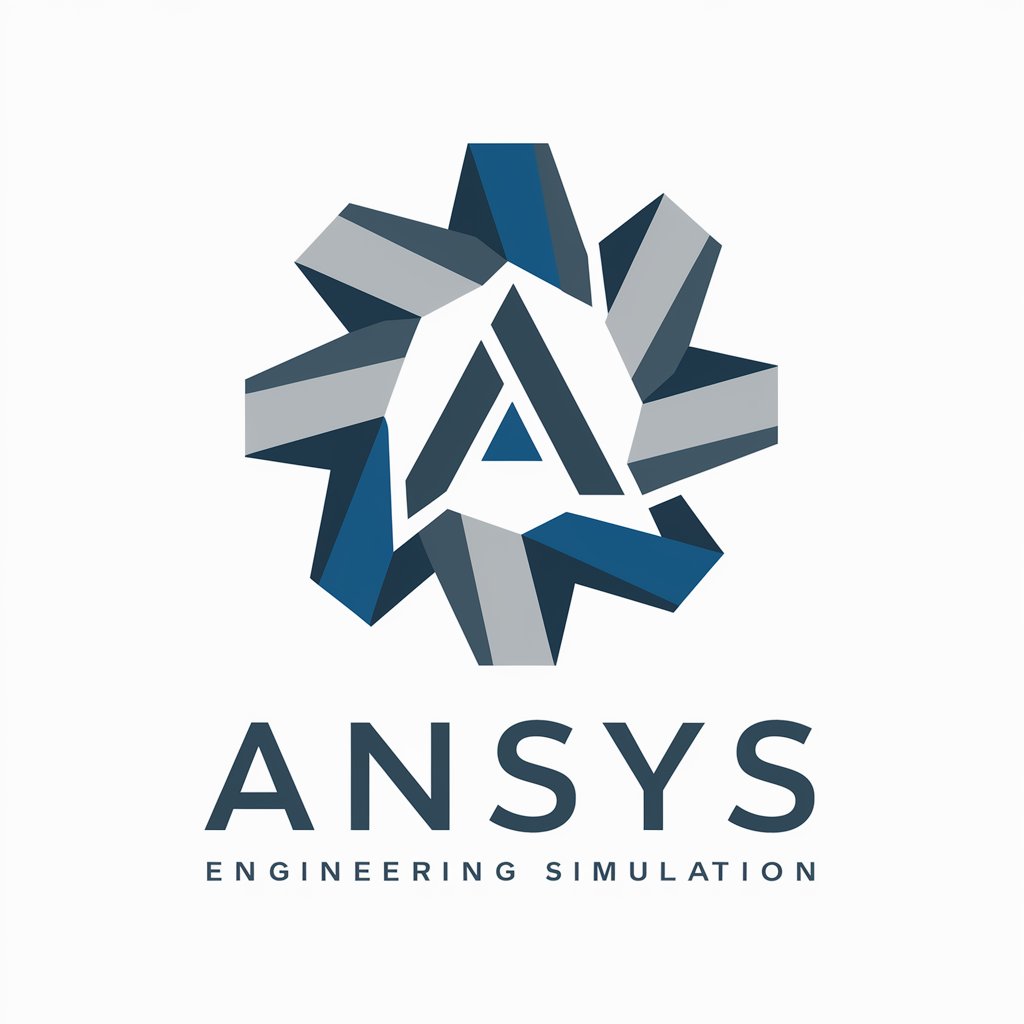GPT for Modelling System Dynamics - tool for dynamic system modeling support

How can I assist you with system dynamics today?
AI-powered modeling and simulation guidance
Can you help me simulate this model in Julia?
How do I optimize my OpenModelica model?
What does this equation represent in system dynamics?
I'm new to Python modeling, where should I start?
Get Embed Code
Introduction to GPT for Modelling System Dynamics
GPT for Modelling System Dynamics is designed to assist with the simulation, optimization, and analysis of dynamic systems. It is particularly useful in fields such as control systems, physics-based modeling, and engineering where complex systems need to be modeled mathematically using differential equations, algebraic equations, and optimization problems. The GPT leverages tools like OpenModelica, Julia, Python, and the ModelingToolkit.jl package for Julia. By automating the symbolic-to-numeric transition of models, it simplifies the exploration of system behavior and helps users find efficient solutions. For example, using **ModelingToolkit.jl** in Julia, you can describe a liquid tank system using differential equations to simulate inflows and outflows of water. The symbolic equations are converted into a numerical problem that can then be solved using various solvers from the **DifferentialEquations.jl** package. The GPT supports complex systems involving physical constraints and helps with optimization tasks like parameter tuning or stability analysis. Powered by ChatGPT-4o。

Main Functions of GPT for Modelling System Dynamics
System Modeling
Example
Creating a mathematical model of a dynamic system using differential equations or DAEs.
Scenario
A user models the inflow and outflow of liquid in a tank, specifying parameters like inflow rate, outflow rate, and liquid level. The system is then balanced by specifying inputs and solved numerically using a solver like `Tsit5()`.
Symbolic Manipulation
Example
Handling symbolic expressions of dynamic models using packages like **Symbolics.jl**.
Scenario
The user creates a symbolic model for a mechanical system, such as a pendulum. Symbolic manipulation helps simplify complex equations before converting them to numeric form.
Index Reduction of DAEs
Example
Automatically reducing the index of DAEs from higher-order to a solvable index-1 form.
Scenario
In a pipeline flow system, the DAEs are simplified so that a mass matrix solver can handle the system’s dynamics under non-linear pressure and velocity conditions.
Parameter Optimization
Example
Performing Monte Carlo simulations for uncertainty analysis or parameter optimization.
Scenario
A user changes the cross-sectional area and inflow rate parameters of a tank system to see how uncertainties affect the liquid level over time. They use Monte Carlo simulation to generate different scenarios.
Interactive Simulations
Example
Running multiple simulations with varied parameters and inputs interactively.
Scenario
The user simulates the behavior of a heat exchanger by changing the inlet fluid temperature over time and observing its impact on system efficiency and steady-state behavior.
Re-usable Component Libraries
Example
Building component libraries for re-use in different simulations, similar to Modelica.
Scenario
The user creates a library of electrical circuit components (resistors, capacitors, etc.) that can be reused in different circuit simulation projects, enabling fast and modular model building.
Ideal Users of GPT for Modelling System Dynamics
System Dynamics Engineers
Engineers who need to model and simulate physical systems, such as mechanical, electrical, and fluid systems, will benefit the most. They can leverage GPT for tasks like symbolic model creation, equation simplification, and real-time simulation of dynamic behavior.
Researchers in Control Systems
Researchers working in fields like control systems and optimization can use GPT to simulate feedback control, stability analysis, and explore system responses to different control inputs. The symbolic-numeric conversion is ideal for prototyping control algorithms.
Educators and Students
Professors and students in engineering, physics, and applied mathematics can benefit from GPT for teaching dynamic systems modeling. Its intuitive interface and integration with tools like Julia make it perfect for learning and experimenting with complex models.
Software Developers in Simulation Platforms
Developers creating software tools for system simulation can use GPT to incorporate sophisticated dynamic modeling features, particularly in applications that involve real-time simulations, such as robotics, aerospace, and industrial automation.
Data Scientists with Modeling Needs
Data scientists looking to simulate and optimize complex models involving time series, physical processes, or financial systems can use GPT to build predictive models and perform optimization over time.

How to Use GPT for Modelling System Dynamics
Visit yeschat.ai for a free trial without login, no need for ChatGPT Plus.
Open the browser and navigate to the yeschat.ai platform. Here, you can access GPT for Modelling System Dynamics without any login requirements, allowing you to explore the tool freely.
Prepare your model or system information.
Have your system dynamics model ready, including equations, variables, and any constraints. Be ready to specify the type of model, such as ODEs, DAEs, or optimization problems.
Use OpenModelica, Julia, or Python integrations.
Ensure you have access to modeling environments like OpenModelica, Julia's ModelingToolkit.jl, or Python with Modelica bindings. You will integrate these with GPT for optimization or simulation assistance.
Iterate with tailored responses.
Input specific model details and receive guidance, from symbolic manipulation to numerical solvers. Use this tool for equation simplifications, parameter tuning, and running simulations.
Validate and refine your results.
Once you obtain outputs like simulations or parameter optimizations, validate them with your system's real-world data or further refine the model.
Try other advanced and practical GPTs
Budget Buddy
Your AI-powered Financial Advisor

Mindful Mentor
Empowering Mindfulness with AI

Essay Assistant
Craft Your Essays with AI Precision

Zoom アシスタント
Elevate Your Zoom Experience with AI

UR Summary
AI-powered summaries for any text

Malware Analysis | Reverse Engineering
AI-driven malware and reverse engineering analysis

Ansys Engineering Simulation
Empower design with AI-driven simulation

Excel Financial Model Prof / Review
Elevate Your Models with AI-Powered Financial Expertise

K Mob
Empowering your academic pursuits with AI

La Mob
Crafting Memorable Brand Universes

CMG : THE MOB
Power your CMG knowledge with AI.

Market Matchmaker: Your AI Guide for Selling Smart
Maximize Your Market Impact

Frequently Asked Questions about GPT for Modelling System Dynamics
What kind of models can GPT for Modelling System Dynamics handle?
It supports a wide variety of models including Ordinary Differential Equations (ODEs), Differential Algebraic Equations (DAEs), and optimization problems. Integration with tools like OpenModelica, Julia's ModelingToolkit.jl, and Python makes it versatile for system dynamics.
Can I use GPT for symbolic manipulation of equations?
Yes, GPT supports symbolic manipulation through platforms like Julia’s Symbolics.jl. This allows for the manipulation of differential equations and algebraic models before they are converted into numeric form for simulation.
Is this tool suitable for optimization problems?
Absolutely. You can define optimization problems within your dynamic systems and GPT can help you set up, simplify, and solve these using appropriate solvers in Julia or Python.
Does GPT assist in debugging simulation errors?
Yes, GPT provides step-by-step guidance for troubleshooting model inconsistencies, numerical issues, and solver errors, particularly for complex systems like DAEs or high-index problems.
What are the key features of using GPT for system dynamics in Julia?
Key features include symbolic model generation, linearization of systems, creating reusable model components, and simulation using DifferentialEquations.jl, along with advanced features like Monte Carlo simulations for parameter uncertainty.
